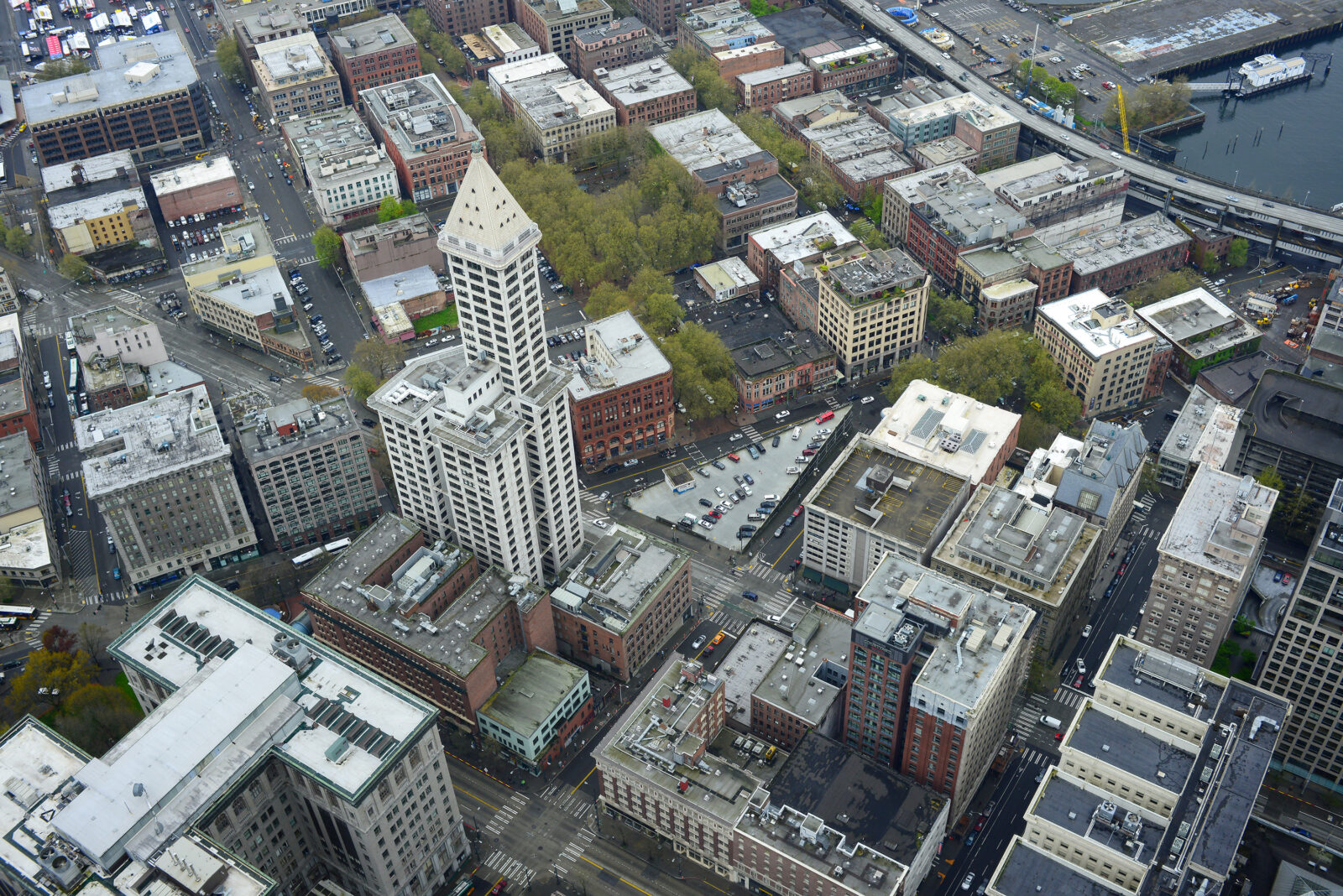City’s shameless promoter put old Seattle on the map
Originally published at Seattle Post-IntelligencerWhen you get a copy of the Seattle Arts Commission’s Directory of Public Art, you will see listings of statues to Christopher Columbus, Leif Erikson and Dr. Jose Rizal, the hero of the Philippines. But we barely manage one statue and a copper bust of Chief Seattle and a mere artistic “silhouette” for the local pioneers Arthur Denny and David “Doc” Maynard (at the Pioneer Square Metro stop).
And even as we prepare for next year’s 100th anniversary of the Klondike Gold Rush, you will see no mention of a statue–neither silhouette nor bas relief –to honor the person who did the most to establish Seattle as a world class city, Erastus Brainerd.
He is not in school history books (how would they know what to make of him?), but he surely was one of the world’s greatest public relations men, and the first of a long line of such conjurers in Seattle. The very fact that Seattle has reason to celebrate the Klondike Gold Rush at all, and enjoys the excellent gold rush museum operated by the U. S. Park Service across from Occidental Park, is due largely to the talents and gall of Erastus Brainerd.
It was Brainerd, above all, who saw what the arrival in Seattle of a “ton of gold” on the S.S. Portland in the summer of 1897 could mean for its happenstance destination. The newly discovered gold fields in Dawson City were some 1600 miles away in the Yukon Territory of Canada, but you had to get there from somewhere on the West Coast. Vancouver and Victoria were actually closer than Seattle. Tacoma and Portland were nearly as handy, and San Francisco was bigger and better known. But Brainerd and his committee at the Chamber of Commerce persuaded the world that Seattle was the gateway to the Yukon, and later Alaska.
The miners came here, it was said, and we mined the miners. Outfitting stores were built, the ancestors of today’s recreation equipment businesses, shipping lines were founded, food distributors set up. A federal Assay Office was established so that gold could be turned into U.S. currency. By 1911 Seattle had grown from a population of 65,000 to over 250,000 and was organizing another public relations success, the Alaska Yukon Pacific Exposition. Brainerd’s public relations engineered a self-fulfilling boom and truly put Seattle on the world map.
It would be nice to imagine that Brainerd achieved all this simply by sending out a few new-fangled telegrams. But the campaign was far more extensive, aggressive, and wily, if not deceitful. The historian Murray Morgan describes how Brainerd “wrote articles for national magazines, planted quotes from the articles with the wire services, then used extracts from the wire stories in advertisements which proclaimed Seattle the Emporium to the Klondike.”
Other northwest cities tried to use the wire services, too, but Brainerd sent corrections to the papers, which got printed, and provided form letters for newcomers to Seattle to write letters to the editors of their former hometown papers. He used State of Washington stationery to write to mayors and governors around the country, and to foreigners, asking how many prospectors they expected to be heading to Seattle en route to the gold fields. Ostensibly, Seattle wanted to prepare for all the visitors, but the effort was just another way of leaving the impression that Seattle was, indeed, the gateway to the Klondike.
Brainerd took out ads in The New York Journal, Cosmopolitan, Century, McClure’s and other magazines of the day, had the state Secretary of State print a guide to Klondike prospectors that, naturally, routed them through Seattle, and sent the folders to libraries all over the world. It also was Brainerd who went around the Director of the U.S. Mint to get the assay office opened; he did it by enlisting a Pennsylvania Congressman–the brother of a Seattle businessman–in getting a special law passed.
Brainerd himself deserves, but lacks, a biography. We know he was born in Connecticut in 1855, graduated from Harvard College, married and had two children, and was a practicing journalist in the East until 1890. At the start of the gold rush he was, of all things, Paraguayan Consul in Seattle. For a while after his successful gold rush publicity campaign he tried his own luck in the Klondike, as a mining consultant–a mistake. Returning to Seattle in 1904 he became editor of the Seattle Post-Intelligencer. He was active in the Republican Party and later wrote a five volume history of great artists, and another book on “Alaska and the Klondyke.”
Over the decades, Brainerd has been followed by a fabulous string of civic leaders and PR promoters–from the people who organized the early civic “Potlatch” events to those who started Seafair, from the creators of the Century 21 World’s Fair to those trying now to bring the Olympic Games to Seattle in 2008.
It was Brainerd who made Seattle big and rich and confident, but he himself never cashed in. The final years of his life were spent in a mental hospital, where he died Christmas Day, 1922, at age 67.
We ought to put up a statue to Erastus Brainerd.

